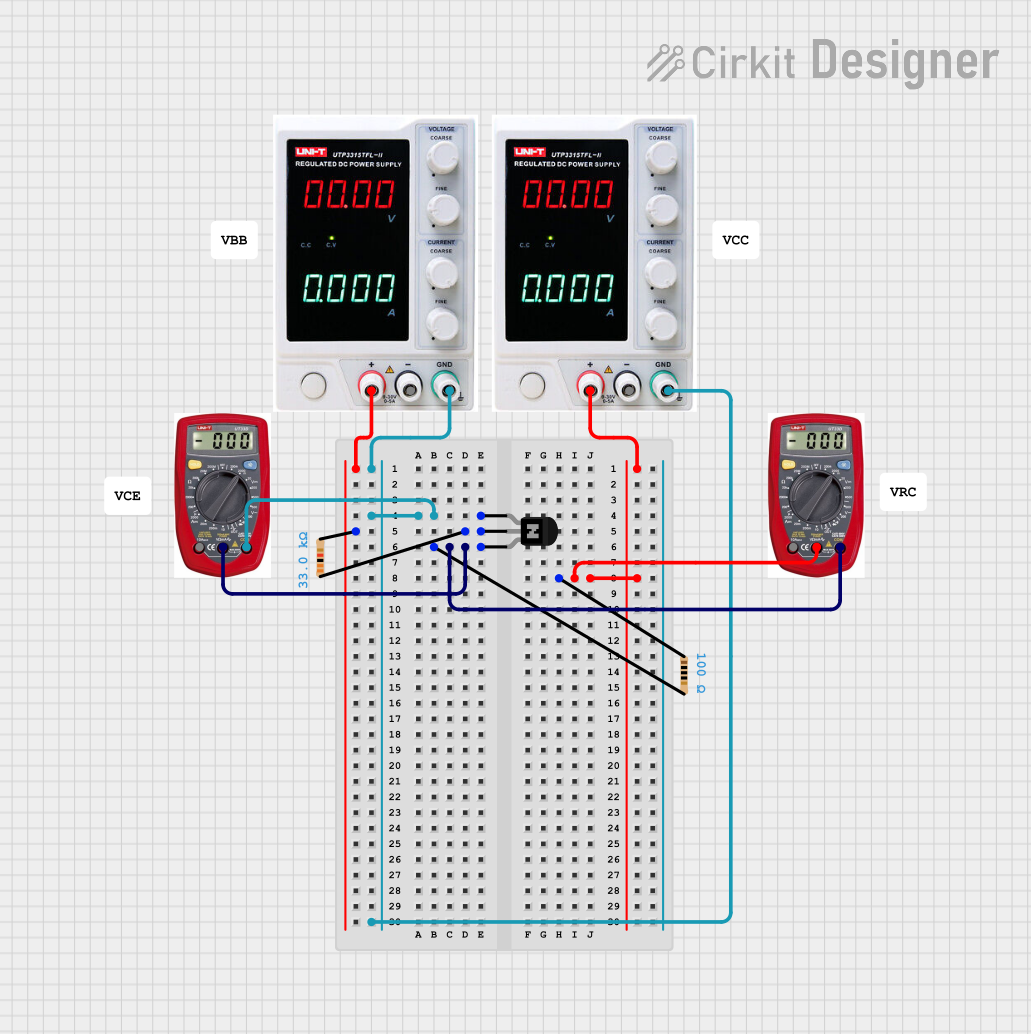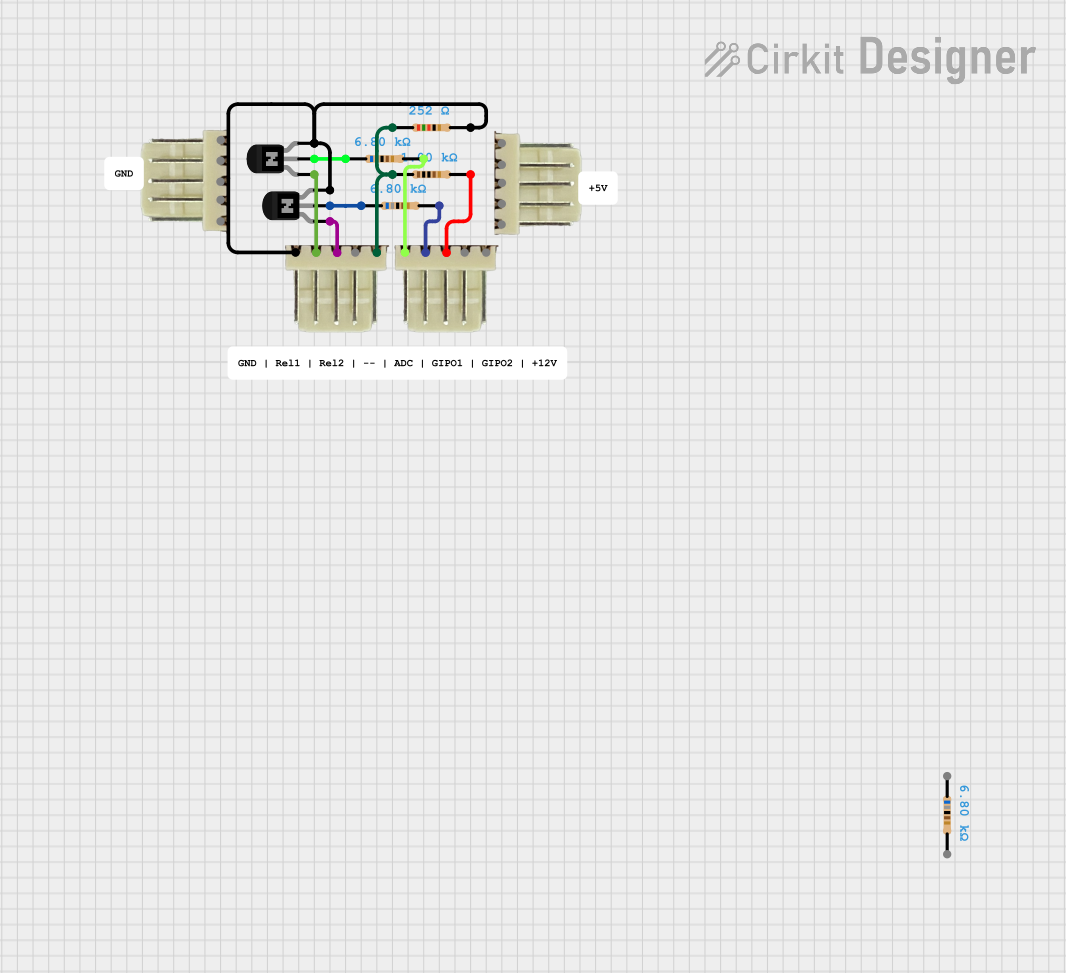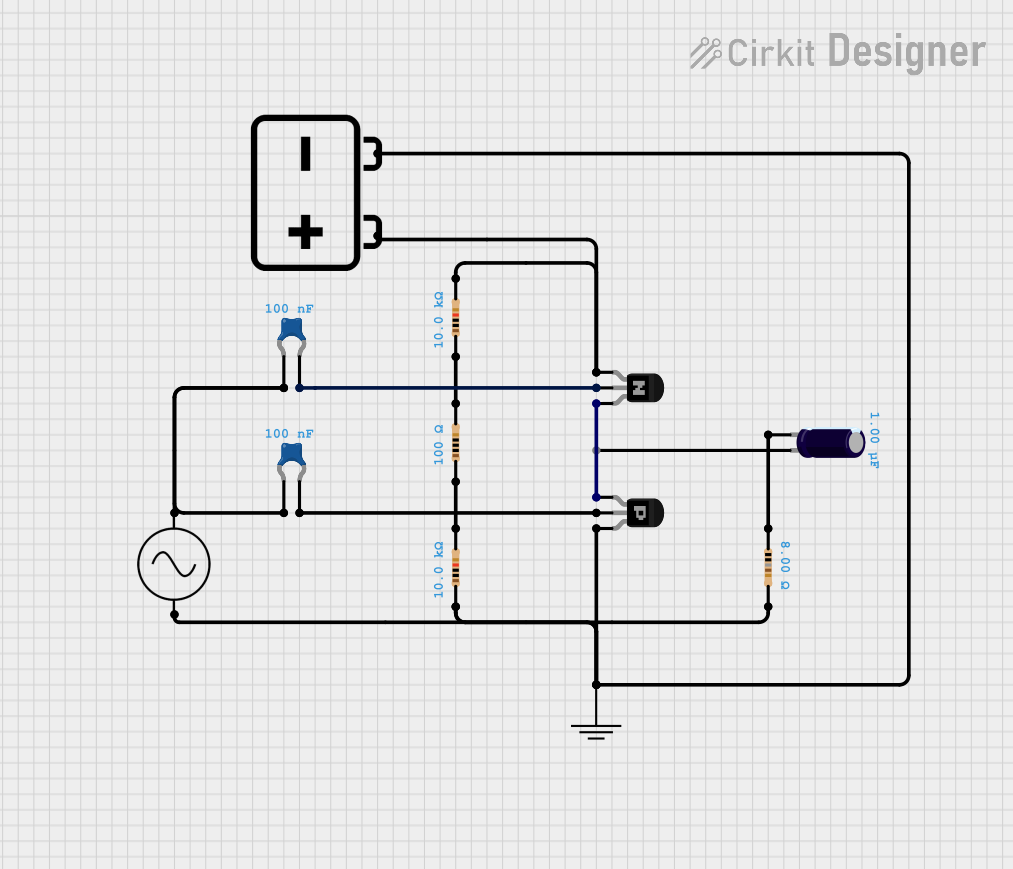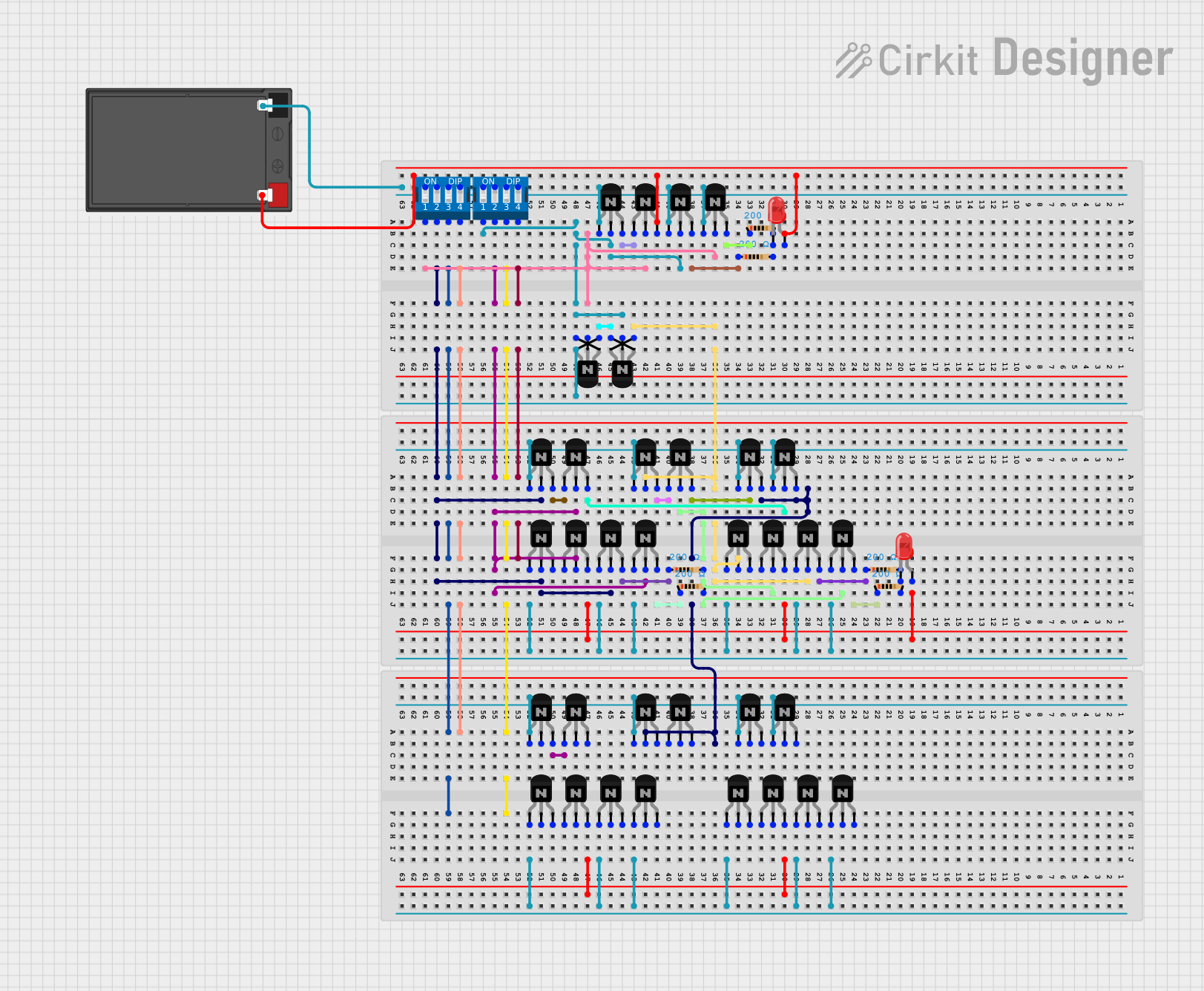
How to Use NPN Transistor (CBE): Examples, Pinouts, and Specs

 Design with NPN Transistor (CBE) in Cirkit Designer
Design with NPN Transistor (CBE) in Cirkit DesignerIntroduction
An NPN transistor is a fundamental electronic component used in various applications to amplify or switch electronic signals. It is a type of bipolar junction transistor (BJT) consisting of three layers of semiconductor material with different doping levels. The acronym 'NPN' refers to the arrangement of these layers: a layer of P-type material is sandwiched between two layers of N-type material. In the CBE (Collector-Base-Emitter) configuration, the transistor's collector (C) is connected to the base (B) through a resistor, which is a common setup for amplification circuits.
Explore Projects Built with NPN Transistor (CBE)

 Open Project in Cirkit Designer
Open Project in Cirkit Designer
 Open Project in Cirkit Designer
Open Project in Cirkit Designer
 Open Project in Cirkit Designer
Open Project in Cirkit Designer
 Open Project in Cirkit Designer
Open Project in Cirkit DesignerExplore Projects Built with NPN Transistor (CBE)

 Open Project in Cirkit Designer
Open Project in Cirkit Designer
 Open Project in Cirkit Designer
Open Project in Cirkit Designer
 Open Project in Cirkit Designer
Open Project in Cirkit Designer
 Open Project in Cirkit Designer
Open Project in Cirkit DesignerCommon Applications and Use Cases
- Signal amplification in audio devices
- Switching operations in digital circuits
- Voltage regulation
- Driving motors and relays
Technical Specifications
Key Technical Details
- Maximum Collector-Emitter Voltage (Vce): The maximum voltage the transistor can handle between the collector and emitter without damage.
- Maximum Collector Current (Ic): The maximum current that can flow through the collector terminal.
- Power Dissipation (Pd): The maximum power the transistor can dissipate without overheating.
- Gain Bandwidth Product (fT): The frequency at which the current gain drops to one.
Pin Configuration and Descriptions
| Pin Number | Name | Description |
|---|---|---|
| 1 | Emitter (E) | Emits electrons into the base region. Connected to ground in NPN circuits. |
| 2 | Base (B) | Controls the transistor's operation. A small current to the base allows a larger current to flow between the collector and emitter. |
| 3 | Collector (C) | Collects electrons from the base. Typically connected to the load and power supply. |
Usage Instructions
How to Use the Component in a Circuit
- Biasing the Transistor: Apply a small base-emitter voltage (Vbe) to turn on the transistor. This voltage is typically around 0.7V for silicon transistors.
- Collector Resistor: Connect a resistor between the collector and the positive supply voltage to limit the collector current.
- Emitter: Connect the emitter to the ground.
- Input Signal: Apply the input signal to the base of the transistor to be amplified.
- Output Signal: The amplified signal can be taken from the collector of the transistor.
Important Considerations and Best Practices
- Ensure that the transistor's maximum ratings are not exceeded to prevent damage.
- Use a current-limiting resistor at the base to prevent excessive base current.
- Provide adequate heat sinking if the transistor is expected to dissipate significant power.
Troubleshooting and FAQs
Common Issues Users Might Face
- Transistor Not Switching: Ensure that the base-emitter voltage is sufficient to turn on the transistor.
- Excessive Heat: Check if the power dissipation exceeds the transistor's rating. Add a heat sink if necessary.
- Low Amplification: Verify that the transistor is not in saturation or cutoff and that the load is appropriate for the desired amplification.
Solutions and Tips for Troubleshooting
- Measure the voltages at the base, collector, and emitter to ensure they are within expected ranges.
- Check the base current and ensure it is sufficient to drive the collector current needed for your application.
- If the transistor is overheating, reduce the power dissipation by lowering the collector current or improving heat sinking.
Example Code for Arduino UNO
// Example code to use an NPN transistor to switch an LED on and off with Arduino UNO
const int basePin = 2; // Pin connected to the base of the transistor
const int ledPin = 13; // Pin connected to the collector of the transistor
void setup() {
pinMode(basePin, OUTPUT); // Initialize the base pin as an output
pinMode(ledPin, OUTPUT); // Initialize the LED pin as an output
}
void loop() {
digitalWrite(basePin, HIGH); // Turn on the transistor
delay(1000); // Wait for 1 second
digitalWrite(basePin, LOW); // Turn off the transistor
delay(1000); // Wait for 1 second
}
Note: The above code assumes that there is a suitable resistor in series with the LED to limit the current and that the LED is connected to the collector of the transistor with the emitter grounded. The base resistor is also assumed to be of a suitable value to limit the base current.